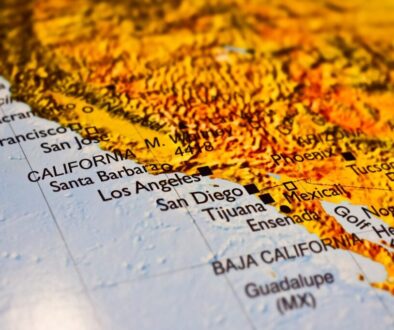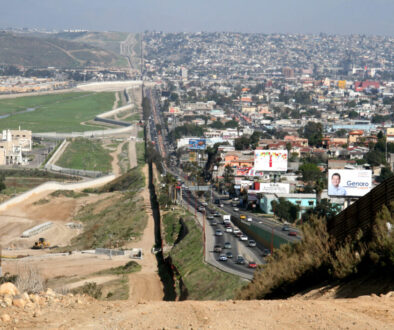The Protection of Intellectual Property in Mexico
Background of the Protection of Intellectual Property in Mexico
The first efforts made at the protection of intellectual property in Mexico (IP) began in 1832 with the “Law of Property Rights for Inventors”. During that period, the mandate was put into effect as a measure to safeguard certain kinds of ideas and innovations. It was implemented as a derivative of Spanish law. In 1889, it was superseded was by the “Law of Manufacturing Trademarks.” This statue was patterned after French codes for the protection of intellectual property in Mexico and was enacted while Porfirio Diaz served as Mexico’s president.
In the 20th century, the protection of intellectual property in Mexico was heavily impacted by transnational accords and foreign laws such as the Brussels Review (1900), the Washington Review (1911), the Hague Review (1925), and the Convention of Paris (1934). In addition to this, the Mexican Law of Industrial Property of 1943 was heavily affected by statutes implemented by France in order to protect intellectual property within its borders. This code was updated on several occasions and was utilized as the basis for the “Law of Inventions and Trademarks”, which the Mexican government implemented in 1976. The purpose of the law was to protect intellectual property in Mexico. It was enforced until 1991 when the “New Law of Industrial Property” was codified.
Mexico’s “New Law of Industrial Property,” or as it is called in Spanish “Ley de Propiedad Industrial,” was updated in 1994 so that it conformed with North American Free Trade Agreement (NAFTA) standards. Under the reworked law, “the author or the person who creates an invention, utility model or an industrial design has the right to exclusively exploit it for his benefit himself or by another duly authorized individual.” In accord with the NAFTA agreements on the subject of the protection of intellectual property in Mexico, the United States, and Canada if one of the signatory countries to the NAFTA is unable to give the minimum guarantees to an investor, that person or group can take their case to an arbitration court. “The arbitration court will defend the interests of the investor, without taking into account the national legislation of the defendant country.”
How Intellectual Property in Mexico is Classified
In Mexico, IP is classified into two categories: Industrial Property (Inventions and registrations), and copyright (literary, musical, artistic and photographic works, among others). Mexico’s Ministry of Economy, through the country’s Institute of Industrial Property (IMPI) has the jurisdiction to administer systems for the protection of intellectual property in Mexico at the national level.
The items protected by the IMPI are:
- Industrial Designs such as Industrial Model, Industrial Drawing, Brand, Commercial Notice, Commercial Name and Denomination of Origin;
- Patent, which is the product or process that proves to be new at the transnational level;
- Utility model, which are those changes to existing inventions and innovations, tools and machinery to improve their performance.
The safeguarding of industrial property is executed in order to prevent any illegal usage of patents, utility models, and industrial designs. Therefore, the Institute (IMPI) is governed by three characteristics of industrial property rights:
- Exclusivity, where the owner is the only one authorized to exploit commercially what he has protected;
- Temporality, which is the stipulated time during which the protected can be exploited commercially.
- Territoriality, which are the rights granted within the national territory and is independent of those granted in other countries.
At present, the governing rules for the protection of intellectual property in Mexico are under close examination. As the renegotiation of the NAFTA continues over the next months, representatives of the Mexico, the US, and Canada are in agreement that intellectual property rights need to be better protected in order to preserve the North America’s global competitiveness. The negotiators for Mexico, Canada, and the United States are certain of the fact that many of the North American Free Trade Agreement’s intellectual property provisions are dated or are inadequately enforced. It is believed that the misuse of patent rights and intellectual property theft costs American consumers and businesses approximately $300 billion each year.
Protection of intellectual property in Mexico is of special importance to the US economy. IP-driven manufacturing supports the positions of approximately 1 in 5 American workers, while the value that such industry adds to the economy of the United States is a hefty six trillion dollars of its GDP.
In Mexico, the governmental organ with the legal mandate to enforce the laws that ensure the protection of intellectual property in Mexico is the “Instituto Mexicano de Propriedad Industrial,” or the Mexican Institute of Industrial Property (IMPI). The IMPI was formed by government action in 1993 to provide professional and technical support to the country’s Economics Ministry. It is charged with:
- Granting intellectual property protection in Mexico using patents, utility model registrations, and industrial designs;
- Promoting international cooperation through the exchange of information with institutions responsible for protecting intellectual properties in other countries;
- Promoting invention, innovation and the transfer of technologies in order to make the Mexican economy competitive on a global scale;
- Preventing and combat acts that violate intellectual property rights and promote unfair competition.





